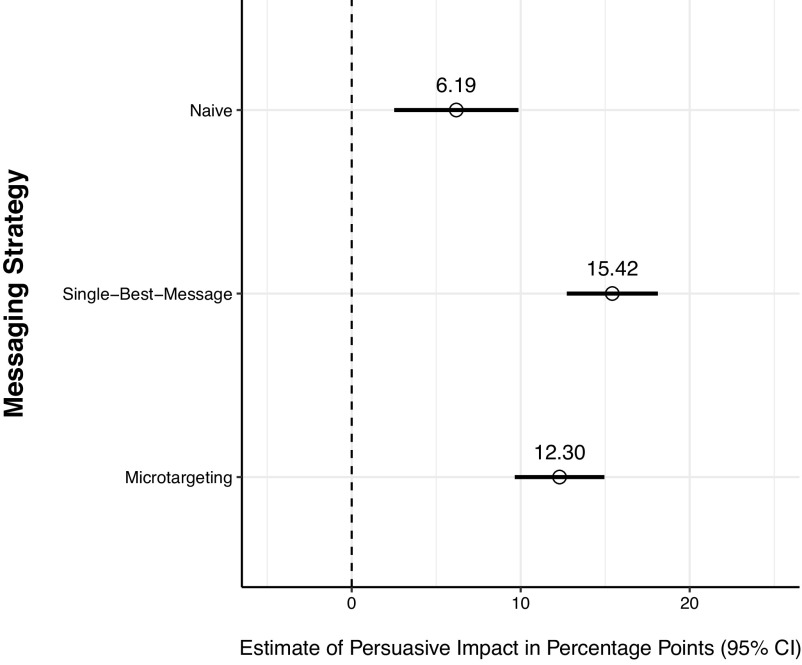Fig. 3.
Political microtargeting increases persuasion over the naïve but not the single-best-message strategy in Study 2. Results from the experimental phase of Study 2. The first two rows display the estimated persuasive impact of showing people a random message (the naïve strategy) or the best overall message in the calibration phase (the single-best-message strategy), respectively. The third row displays the estimated persuasive impact of microtargeting, collapsed across the three covariate profiles used to target the messages. The three covariate profiles correspond to the “top-performing” profiles (where the expected advantage of microtargeting was largest in the calibration phase). 95% CI are based on robust SEs. SI Appendix, section S3.4.2, reports average ratings of policy support across conditions and covariate profiles.

